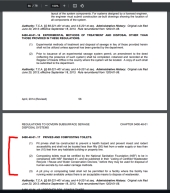aaron hirsch wrote:So if irrigation water is local then we deplete the water table. And if irrigation water is brought in from a distance we raise the water table. Each have issues.
Quite so. Either you are using the water supplies of your area or you are using the water supplies of another area.
Something I think you might want to consider trying is a technique called
groundwater banking. This works by using water when it is necessary in times of drought from an aquifer, and then recharging the aquifer when the rains are plentiful. These cycles can be seasonal, yearly, biannual, or much much longer depending on the cycles of your location.
aaron hirsch wrote: Please note this is an arid climate with little annual rainfall
Considering that you are in an arid climate and you made this post in the greening the desert subforum, I think it may be worth considering ways of altering your climate into one that is more productive.
aaron hirsch wrote: Any ideas would be great...
I will take this as an invitation to start talking about altering the climate so water is no longer a shortage issue, or at least less of one. Here are some techniques that can be used to start recharging your aquifer and raising the water table:
-
Swales are on-contour "ditches" that catch and slow rainwater so that it has time to sink into the ground. In the process, this also decreases erosion and runoff.
-
Air wells work on the principle of thermal inertia which states that objects with thermal mass can capture and store heat from the day and release that heat during the night. Air wells are typically made of rocks, concrete, or stone which have high thermal mass. When dawn starts, the well is still cold and water condenses onto the surface and trickles into the storage container.
-Rock Mulch works on a similar principle and can be used to catch water from the air for your plants.
-
Gabions can be used to slow water down, too, in case of flood events.
-The
Desert Oasis and
Greening the Desert videos discuss similar concepts and more.











